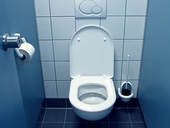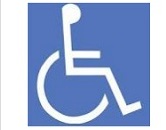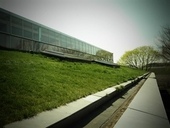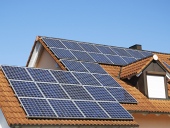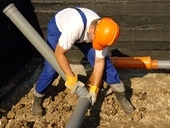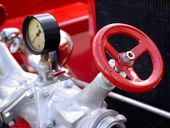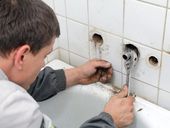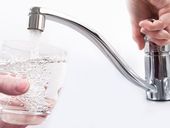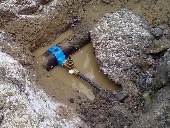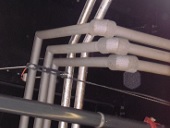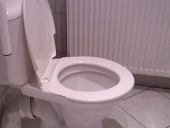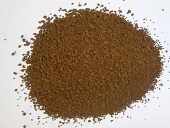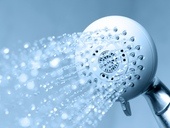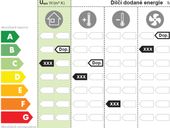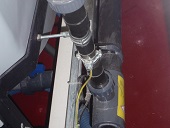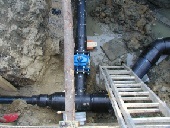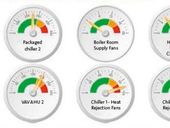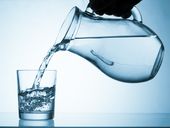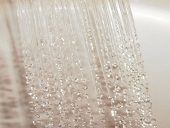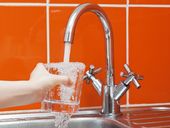Brussels will present a plan of toilet cistern volume regulation. The European Commission follows the 2009 study that says that our toilets cause about a quarter of the water consumption of households. Read also manufacturers' responds to the forthcoming recommendations.
Archiv článků od 25.3.2013 do 18.11.2013
Solar radiation can be utilised in two basic ways. You can either gain heat from solar thermal collectors or electricity in photovoltaic panels. So far, heating of water by photovoltaics was too expensive to compete with conventional solar thermal collectors.
Weight , durability , and currently even the price of solar thermal collectors is comparable with commercially available photovoltaic modules.
Annual energy yield per unit area is approximately twice in the solar thermal collectors compared to the highest quality photovoltaic modules with cells made of monocrystalline silicon, due to the higher efficiency.
In the summer the photovoltaic modules are better when the working fluid is heated to temperatures above 100 °C. In the winter the breaking point is about 40 °C. The advantage of photovoltaics is the absence of heat transfer fluid and easier transfer of energy produced to the point of use. Electricity can also be used more versatile than heat.
If the investment cost of a complete solution of heating water by electricity from photovoltaic panels, either directly or using a heat pump, is lower than the investment cost of the solar thermal system, the PV water heating can be considered as effective utilization of electricity from photovoltaic plants. Such a solution could then be included as an alternative to any grant support for solar water heating.
Less experienced HVAC field service managers sometimes tend to have difficulties in identifying the causes of technical problems that common practice brings. The table in the article can be used both ways – to find the cause of the problem or use it as a basis for a maintenance plan designed to prevent the faults and equipment failures.
This paper deals with the possibilities of the use of membrane filtration in water treatment process intensification. The introduction is presented to the emergence and development of these technologies, their gradual expansion and application. Following are descriptions of specific features and the possibility of using microfiltration and ultrafiltration membrane modules. Includes a description of the materials used for the production of membranes, their advantages and disadvantages are also discussed procedures for testing the integrity of membranes. Attention is paid to effect separation of individual types of pollution and usage of these technologies in the country.
The purpose of CSN 73 6660 was to introduce a national standard for water supply in buildings in accordance with European standards (especially DIN EN 806-1 to 5 and EN 1717) and make the residual norm to these European standards, which would include requirements that do not European standards developed in sufficient detail or at all.
It is currently being prepared standard CSN 75 6780 dealing with this issue comprehensively. This standard describes the requirements for pre-treatment, storage and handling of rainwater and gray water. The standard is based on the English Standard BS 8525-1 [1] and is supplemented, in the spirit of the modern approach to the water as well as part of energy use of gray water.
Centralized provision of hot water in the apartment building is associated with the specifics of four (commercial space, unmetered amount of heat for the preparation and distribution of hot water, the limits of specific consumption of heat, heat supply technology for domestic hot water through residential transfer stations).
In relation with the implementation of the revised EU Directive 2010/31/EU on the energy performance of buildings are currently changing some of Czech legal regulations and new methodology for energy performance assessment is introduced . This article focuses on an example rating the standard family house with conventional solution of building envelope and technical systems, using the new evaluation method. For this object will be also an obligation to issue an energy performance certificate as required by the Consolidated Act No. 406/2000 Coll., as amended.
Article discusses the possibility of using gray water in buildings and as the example cites the hotel Mosaic House in Prague. This hotel is the first building in the Czech Republic, where they were used gray water for flushing toilets and for cleaning. The article also described the gray water treatment technology.
The European Union is committed to reducing energy consumption in the built environment. Since the heating, ventilation and air conditioning (HVAC) represents approximately 11% of the total electricity consumption in Europe, these systems are an important part of the commitment of the EU. In this article, we discuss two specific aspects of HVAC energy efficiency, both are based on that understanding how the commercial buildings work in real life is the first step towards reducing energy consumption.
The new standard CSN 75 5409 is valid from March 1st 2013. Technical Report on protection against Legionella will apply from May 1st 2013. In case of conflict of energy saving and hygiene prevails hygiene. Size of the hot water tank is chosen according to the requirement of heat pump. Volume of accumulation of solar systems is about 50 l / m 2 of collector area.
The author draws near possibilities of “economical” disinfection of not only drinkable water itself, but thoroughly informs of disinfection possibilities through UV radiation, specifies the advantages and potential risks limiting situations for its use as well as legislative requirements including data concerning the matter of foreign information in his article. Designers, which shall consider the application of this disinfection technology, should, according to the author’s recommendation, apply also the other requirements of factual service condition, i.e. the bio-indication effect of the UV equipment concerning the drinkable water disinfection. Possibilities of this technology application for the water disinfection are illustrated in detail in the contribution.
zpět na aktuální články
